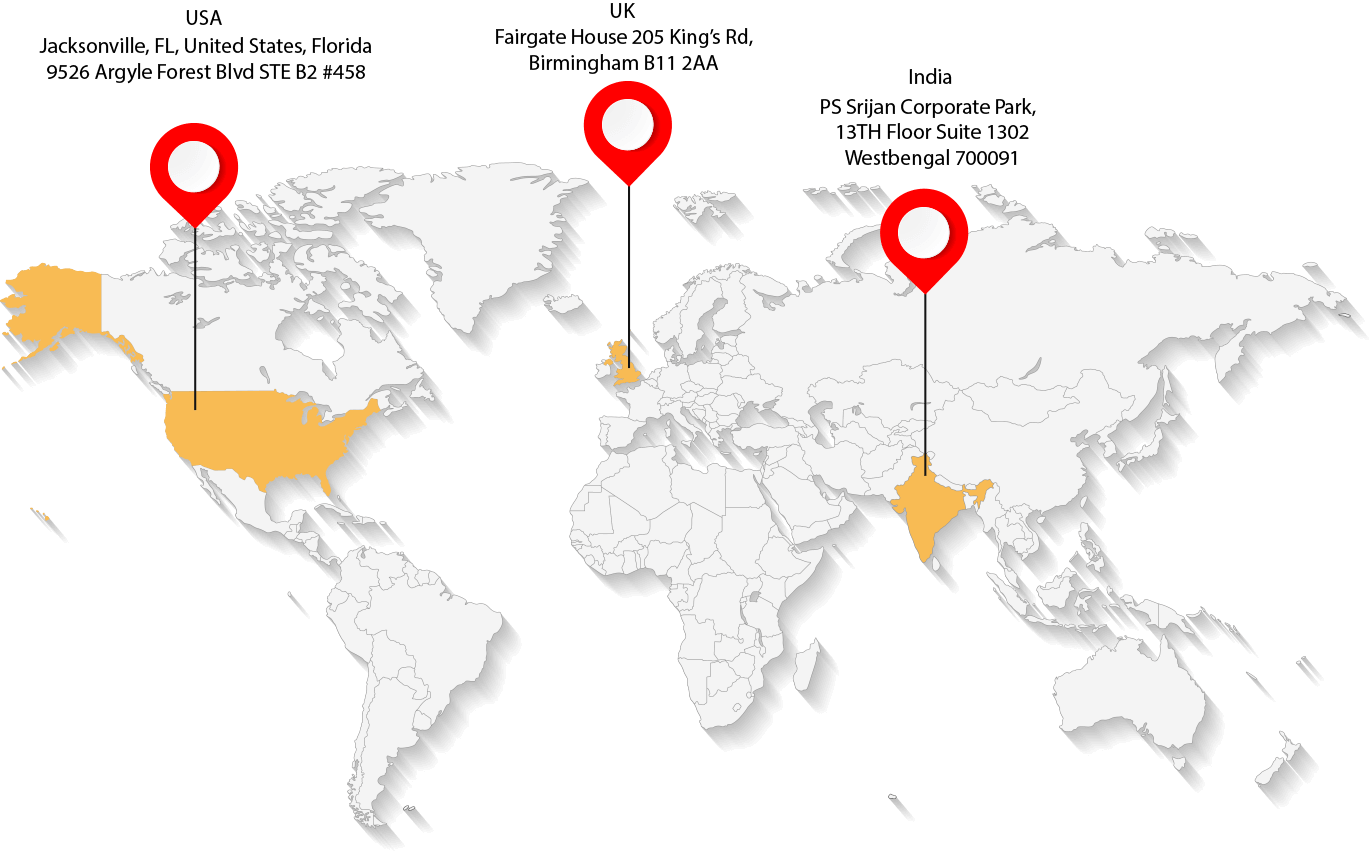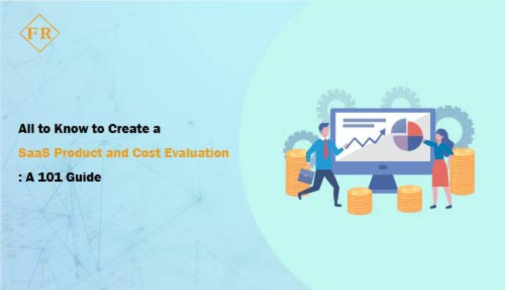All to Know to Create a SaaS Product and Cost Evaluation: A 101 Guide
-

Ashok Kumar Singh CEO
- Saas
Table of Contents
- SaaS Product: A Quick Overview and Its Significance
- The Main Players of the SaaS Market
- 5 Reasons Developing a SaaS is a Tempting Choice for Companies
- A Step-By-Step Guide to Develop a SaaS Product
- Know the Cost to Create a SaaS Solution
- Know the Experience of First Rite in Building SaaS Products
SaaS Product: A Quick Overview and Its Significance
Software as a Service Product (SaaS) is a remarkable solution that enables you to access the software application over the internet without the need to maintain or install it on your device. Rather, you can use the software through the web browser for free or on a subscription basis. Often, companies invest in SaaS application development to acquire increased scalability, streamline and centralise software-related management, and save costs.
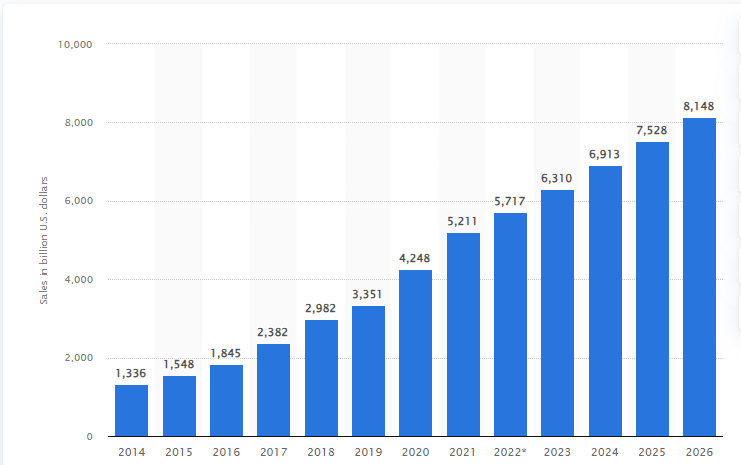
Recent data can easily evaluate the popularity of SaaS applications. The estimated revenue of SaaS applications is predicted to reach nearly $ 253,90 billion by the end of 2023. It is also forecast to gain more recognition with $345 billion by 2027.
The Main Players of the SaaS Market
Have a look at three key industry market players who offer a broad range of SaaS solutions –
- Google
Google offers many SaaS services, including Google Ads, Google Sheets, Google Drive, Gmail, Google Docs, etc. In 2022, their revenue reached up to $279.8 billion. - Slack
A user can access the service of Slack through a browser or a dedicated app that eliminates the need for local installation. At the same time, the services of Slack are hosted on remote servers. This makes it a classic example of a SaaS solution. In 2022, Slack managed to generate nearly $273.4 million in revenue. - Adobe
Adobe is one of the most popular examples of SaaS solutions tightly consolidated into the routines of most individuals. Their products are Adobe Creative Cloud, Adobe Document Cloud, Adobe Experience Cloud, and the likes. In 2022, Adobe generated a profit of $17.606 billion.
5 Reasons Developing a SaaS is a Tempting Choice for Companies
Developing a SaaS product may bring countless benefits regardless of your business domain. Here are some of them –
- Swift Deployment
Know the faster you launch a product, the earlier users can access it, consequently offering you crucial insights. Apart from that, unlike traditional engineering methods, the building of SaaS can speed up the true realisation of ROI, offer faster concept validation, and enable companies to generate revenues fast. Further, quick product deployment may facilitate niche leadership and offer you a competitive edge. - Reduced Cost
Most companies decide to develop a SaaS solution due to its cost efficiency. It eliminates the need for expensive hardware, upfront investments, staffing, and operational costs like infrastructure management or security. Besides, the development technique of SaaS brings clarity into your budget planning by offering monthly or annual costs. - Automated Updates
If you aim to develop full-fledged functioning software with minimum maintenance effort, then developing a SaaS application will be a good choice. The IT infrastructure of SaaS denotes constant automated updates and bug fixes that will enable you to make the platform current and safe without any manual intervention. Automated updates can help you tackle daunting scenarios like data breaches and adhere to the industry rules. This technique can also save the time of you, your users, and software engineers and reduce administrative overhead by improving the overall product dependence. - Compatibility with Different Devices
In aspects of user experience, SaaS software is convenient. Your users can use a single application with a responsive, interoperable design on tablets, laptops, and smartphones. - Scalability
Developing a SaaS platform denotes increased scalability facilitated by its cloud-based nature. Hence, such solutions can be accessed from anywhere, are stable to massive data volumes and user loads, and help achieve your evolving business requirements. A majority of SaaS apps also offer APIs. This offers limitless capabilities for customising your product for specific business requirements and smooth integrations with other corporate software systems (if needed).
A Step-By-Step Guide to Develop a SaaS Product
To simplify the process, we have outlined certain essential steps that will enable you to easily develop a unique SaaS product. Have a look –
1.Conduct Extensive Market Research
Remember, even the most exceptional project idea may not help you stand apart in the cut-throat competition. So, it is crucial to conduct extensive market research that can help you understand the market's competitive edge and its primary objectives. It can also help you ensure its capacity to cater to the ever-changing demand of the market.
To get clarity and guidance to market research flow, make sure to find the answers to the below-enlisted questions –
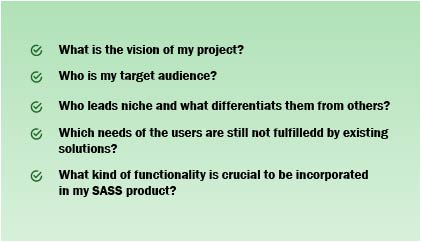
You can easily modify this list per your specific enterprise's needs. Ultimately, determining the answers to the questions will help you develop the backbone of your business strategy. This, in the future, may result in a positive ROI.
2.Create a Business Plan
Developing a SaaS product without a well-defined business strategy may be quite daunting. The proper plan can enable you to define key business objectives, possible risks, and mitigation methods and help you make sure of your company's adaptability to various scale changes. Also, consider creating a strong promotion strategy to facilitate a high recognition level for your product.
You should also consider creating your own USP or Unique Selling Proposition. Presently, the market is filled with countless SaaS products, irrespective of the niche you aim to enter. Hence, it is significant to persuade your target audience that your product is better than the existing ones. Further, the USP will differentiate your services or software from other competitors in the niche, making it exclusive and worthy.
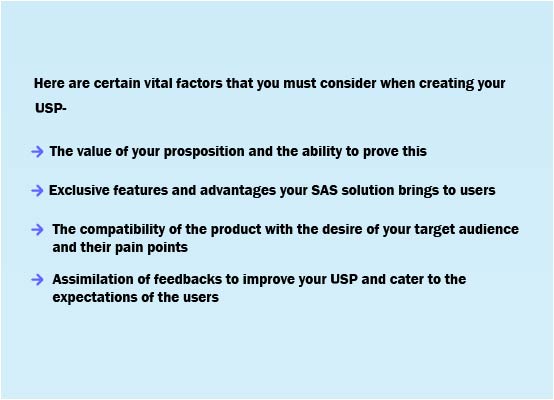
3.Select a Monetisation Model
You can develop a remarkable SaaS product. However, you will not be impressed with it if it doesn't bring profit. Selecting a suitable monetisation strategy is vital to ensure smooth revenue generation.
Here are six of the most used monetisation methods you can adhere to while creating your solution –
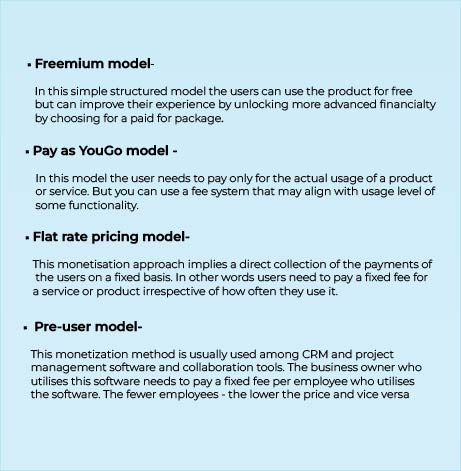
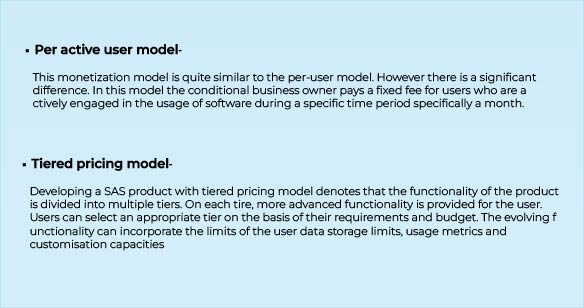
4.Plan Your Budget
Undeniably, it’s challenging to predict all the investments that your SaaS project demands. But, the resources are most often allocated to –
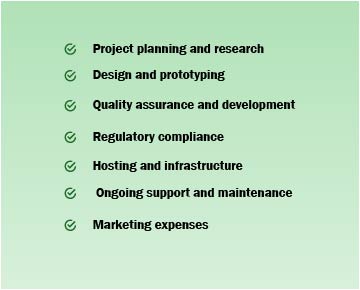
Remember that developing a SaaS application is a multilayered process that needs accuracy. Undeniably, sometimes, particular circumstances may bring unexpected changes to your planning. Do not panic, but incorporate this into your financial planning to go through different hindrances more smoothly and alleviate troubles.
5.Create a Development Team
At this stage, you need to find well-experienced experts who can aid you with SaaS product creation. Firstly, let us walk you through the specialists needed to build such a solution –
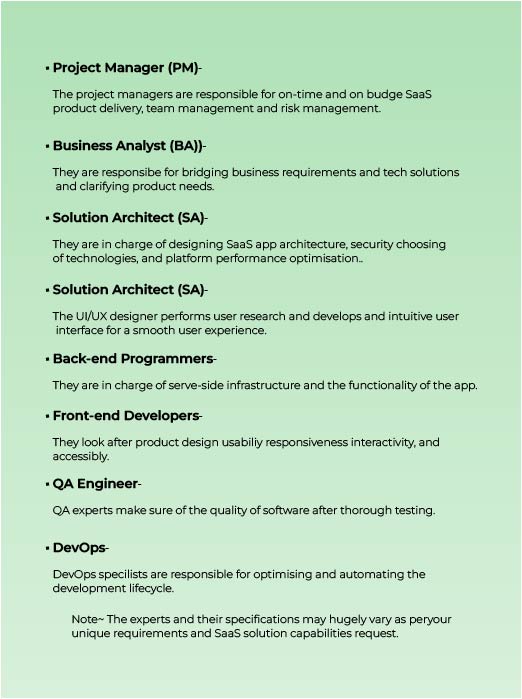
Now, you may be wondering how to find all these specialists. Usually, there are two options to consider – recruiting in-house employees or outsourcing IT service providers.
-
Develop an In-House Team
If you aim to have direct control over your projects, in-house cooperation will be your perfect choice. Undoubtedly, developing an in-house team can be more efficient in tracking project progress and communication. But, maintaining an in-house team demands considerable financial investment. Further, your location can also restrict the expertise you can access.
-
Joining Hands with an IT Outsourcing Company
If you’re looking for more efficient experts, you can consider outsourcing the creation of SaaS software to a 3rd-party tech provider. This means you get to work with a dedicated SaaS application development with the necessary expertise that offers you certain scalability. Further, outsourcing software development can help you save significant costs; you can freely choose the cost-efficient outsourcing region and access a wide pool of specialists worldwide.
6. Identify Key Project Requirements with Your IT Partner
The functionality you will provide your users plays a vital role in the success of your entire SaaS product. But there are more aspects you need to discuss with your IT buddy before going knee-deep into the development.
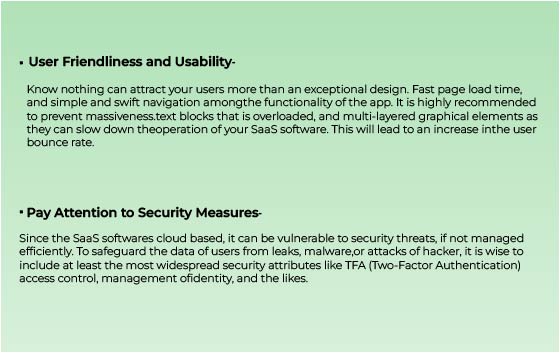
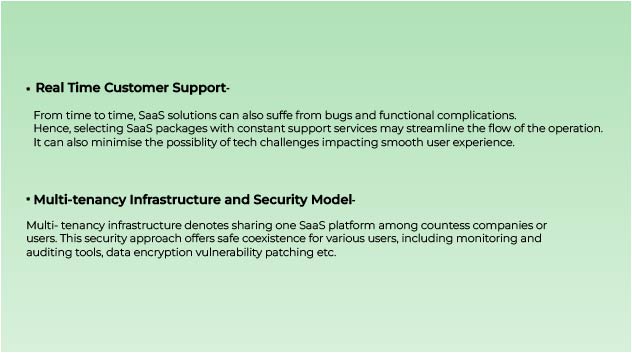
7. Select a Tech Stack
In this stage, you must interact with your Solution Architect, who will help you select the proper tech toolkit. Take a look at the average tech stack we've given below that you can use to develop an exceptional SaaS solution –
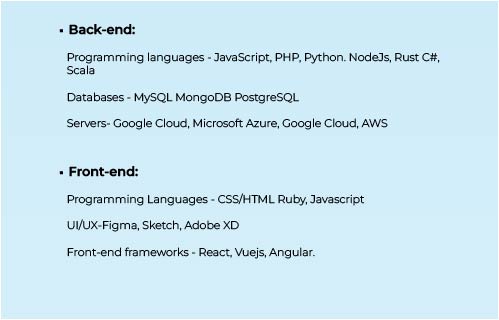
8. Begin from MVP Building
If you desire to create your own SaaS product, beginning with the MVP version (Minimal Viable Product) is wise. This strategy will enable you to access valuable product efficiency insight with minimum possible investments. This method denotes launching a SaaS solution with key functionality to authenticate the concept of your product's viability in real-world conditions. Further, MVP helps you test various monetization strategies to find a remarkable fit for your exact SaaS application.
After the launch of MVP, you will be able to evaluate the user’s feedback and propositions accurately, remove flaws, and improve the technical proficiency of the software by adding fresh functionality in the future.
9. Testing, Launch, and Monitoring
Finally, you have developed your SaaS application! Though the most challenging phase of your creation has passed, you need to test the software. This is crucial to ensure performance accuracy and reliability and detect and fix all malfunctions or bugs before the launch.
Then, your SaaS application development team can help you deploy the solution on the cloud platform or a server. Then, you can make your SaaS solution accessible to users by placing it on digital marketplaces like Google Play or App Store. Finally, it is important to monitor the SaaS solution to offer gradual scalability as per the growth of the user.
Know the Cost to Create a SaaS Solution
The cost to develop impeccable SaaS software hugely depends on the development timeline and the rate of the development specialists. It also depends on the complications of the feature, the count of integrations, tech stack, UI/UX design, SaaS kind, cooperation model, and the like. Considering all these costs, the cost to develop a SaaS platform can range from $50,000- $300,000+.
Have a look at the two most widespread options to optimise the cost of SaaS app creation –
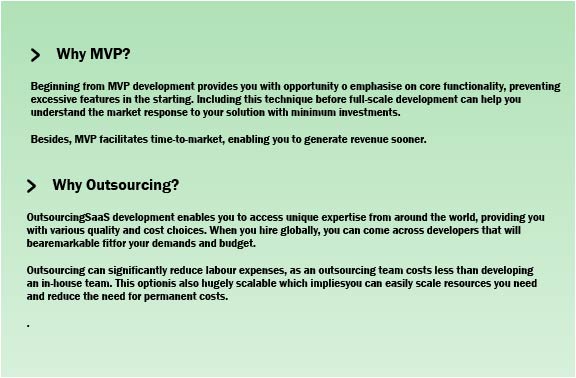
Know the Experience of First Rite in Building SaaS Products
We are an eminent SaaS development company in India. With our experience of 8+ years and a stellar record of delivering outstanding solutions, we offer comprehensive SaaS app development services, SaaS product development services, and SaaS software development services. When you hire us, you will be able to avail the below-enlisted benefits –
- Cooperation with AWS-certified software engineers with practical expertise in creating and deploying SaaS applications.
- In-depth consultation sessions with our Senior Business Analysts on your unique SaaS software concept.
- A trustworthy team with significant experience tackling cloud services like AWS, Google Cloud, and Azure.
- Exceptional software solutions across domains like Healthcare, Education, Manufacturing, Food & Beverage, Real Estate, etc.
- Constant quality assurance and exemplary monitoring at every stage of development.
Frequently Asked Questions
The SaaS app development process incorporates market research, creation of the business plan, the choice of the monetisation model, planning of budget, forming the development team, selection of IT partner, identification of main requirements, creation of MVP, testing, launching, and finally monitoring of the project.
Generally, back-end and front-end developers construct the SaaS product architecture. To build the architecture, they usually use programming languages like Python or JavaScript, various frameworks like Angular or React, servers and databases like AWS or MySQL, and UI/UX tools like Adobe XD or Figma.
The SaaS development process offers swift deployment, cost efficiency, scalability, device compatibility, and automated updates. It offers early user access, transparency in the budget, security, flexibility, and a hassle-free user experience.
Generally, the cost to develop a SaaS platform ranges from $50,000 -$300,000+. However, the number of factors that should be incorporated makes it difficult to give a detailed SaaS development cost. Mainly, your IT partner should look at the requirements list. Then, only they can give you an overview of the total cost.
Our Location
